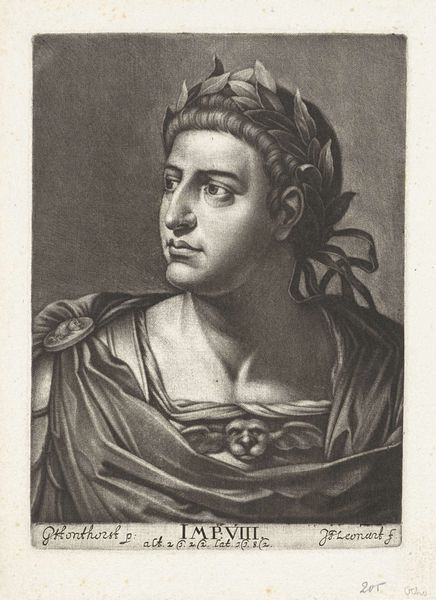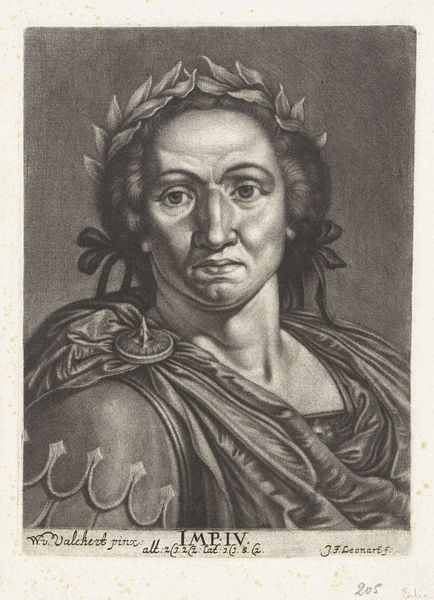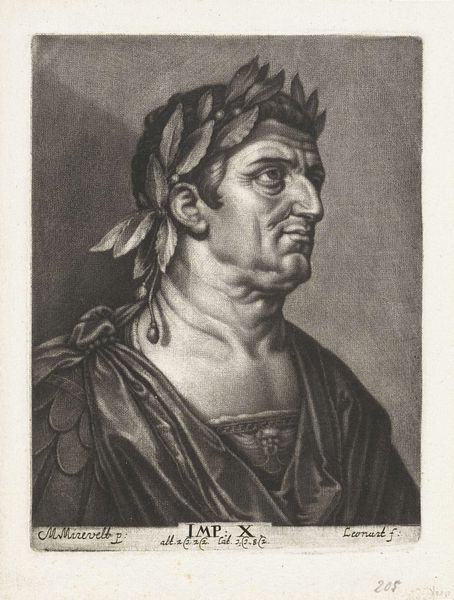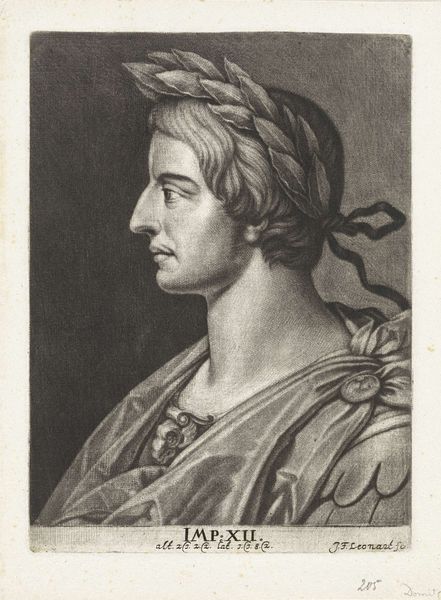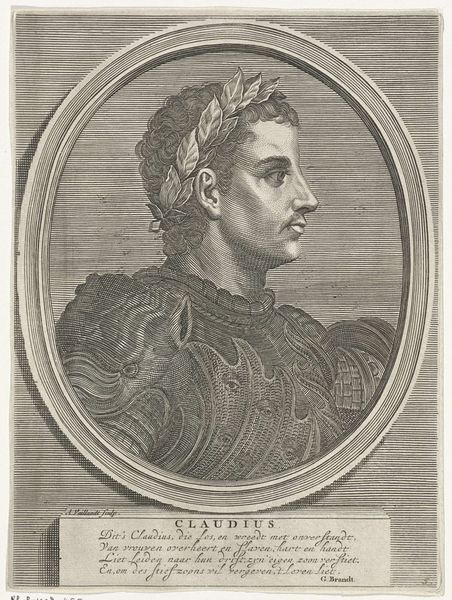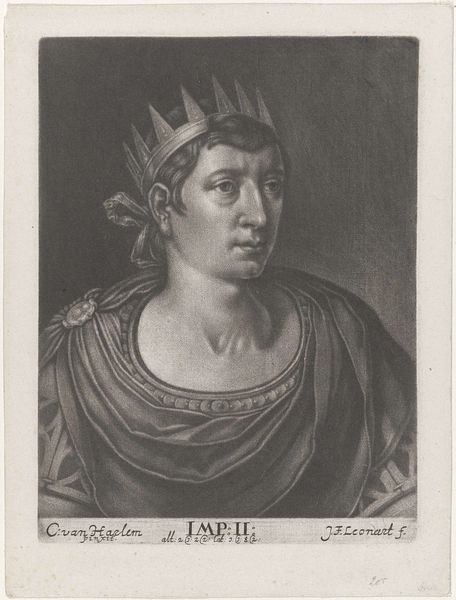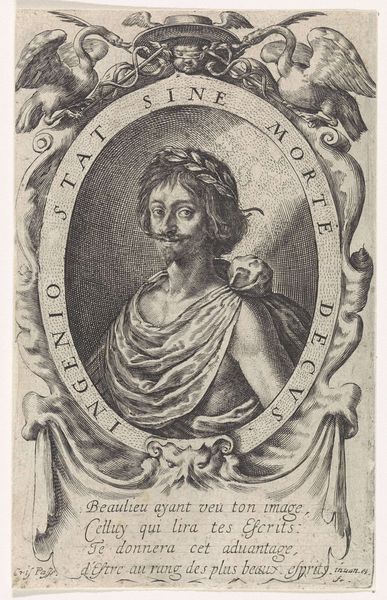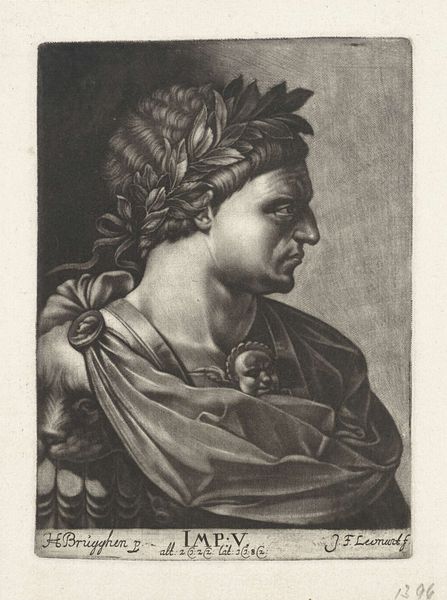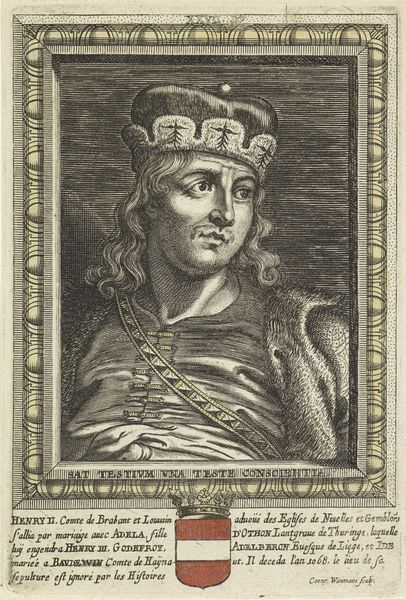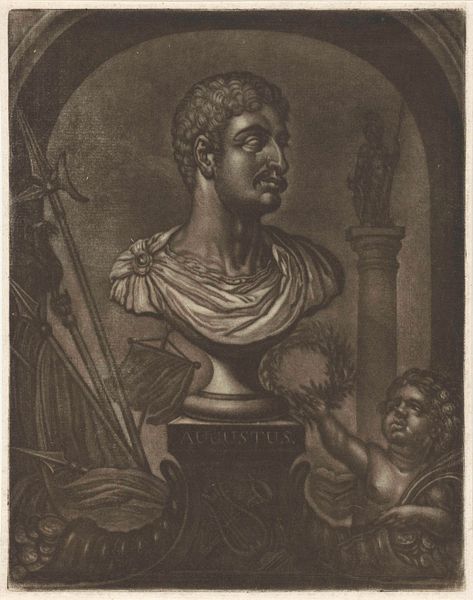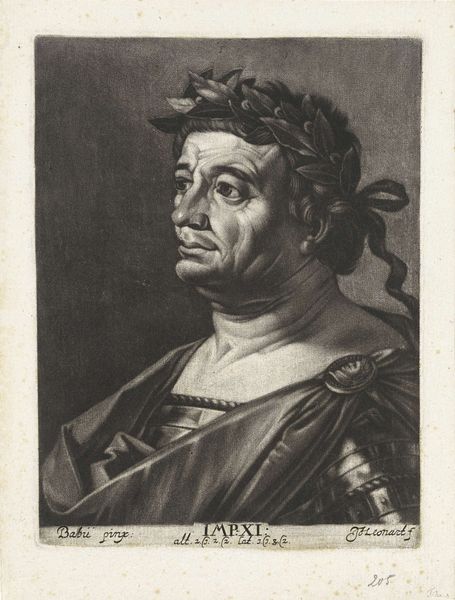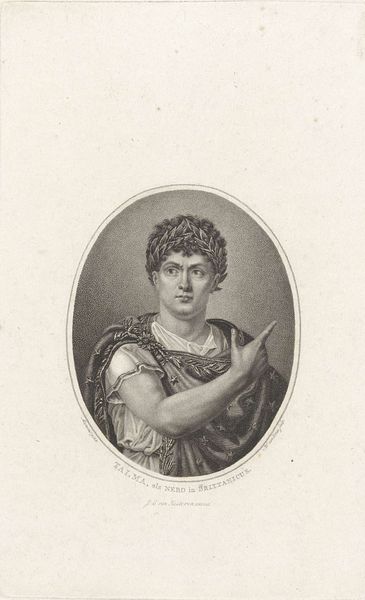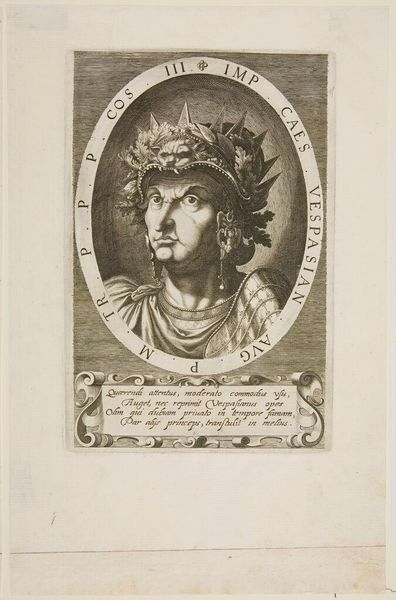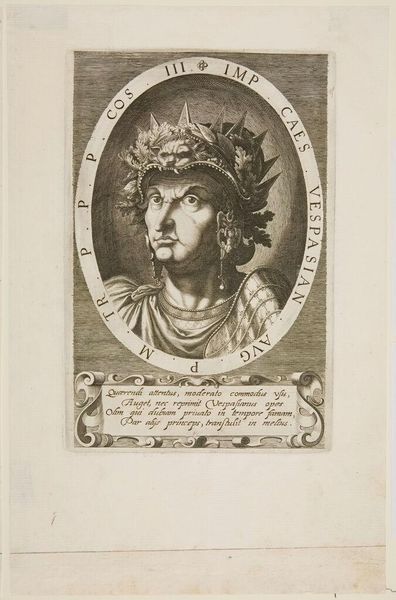
print, engraving
#
portrait
# print
#
ancient-mediterranean
#
history-painting
#
engraving
Dimensions: height 168 mm, width 122 mm
Copyright: Rijks Museum: Open Domain
This engraving of Emperor Tiberius was made by Johann Friedrich Leonard in the 17th century. The printmaking technique that Leonard used allows for the creation of intricate details and tonal variations, and relies on a highly skilled hand. Engraving is a labor-intensive process, requiring the artist to physically cut lines into a metal plate, which is then inked and printed. The quality of the impression depends on the precision and control exerted by the artist. The incised lines create the image, and the depth of the cuts determines the amount of ink held, which is in turn expressed as varying shades of grey when printed. The social context of engraving is also important. In Leonard’s time, prints were a primary means of disseminating images and ideas. They played a vital role in circulating knowledge, political commentary, and artistic inspiration. This portrait reflects a time when the mass production of images was tied to highly specialized craft skills. We might consider how such images circulated, and who had access to them.
Comments
No comments
Be the first to comment and join the conversation on the ultimate creative platform.
